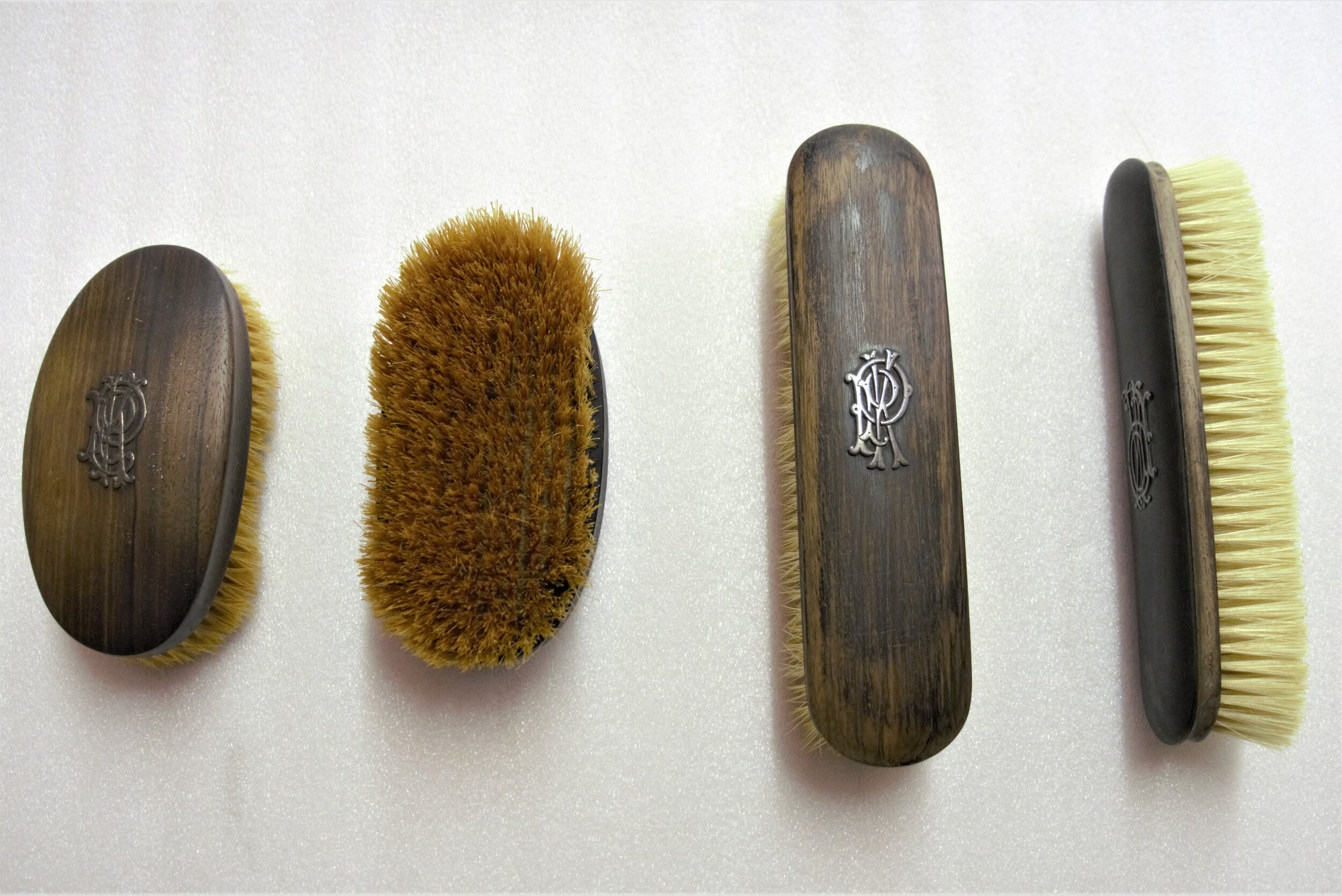Daft as a Brush
/In the early 20th century, it wasn’t uncommon to receive a visit from a door-to-door salesperson, with a suitcase of brush samples for every domestic use. The objects below represent a small selection of brushes of this period from our collection, used for a variety of different purposes.
1987.175 and 1988.29
These shoe brushes date from the early 20th century and were used locally. On the right is a brush made in the UK by Victory. The brush on the left formed part of a shoe cleaning kit of brushes, cloths and polishes.
2008.69
This hearth brush shows how simple functional items could also be decorative, being hand-painted in green with red and white flowers.
2005.15/4 and 5
These 2 pairs of hair brushes (left) and clothes brushes (right) belonged to Edmund Philip Kynaston Potter who lived from 1909 to 1990. They were part of a larger set, given to him as a present when he was a young boy and decorated in silver with his initials. While not everyone could have afforded initialled brushes, they show how a simple hair brush could be a treasured item kept for a lifetime. All of these brushes were built to last and made of wood and natural fibres. When William Kent established Kent Brushes in Hertfordshire in 1777, his simple wooden and natural bristle brushes became the model for brush design for the next 2 centuries. Aside from wood, brushes at this time were made out of ivory, silver, brass and later celluloid and Bakelite, with bristles made from metal, boar or horse hair.
We continue to use a number of different brushes in our homes today, brushes for cleaning, brushes for hair, brushes for teeth. But in many cases they are frequently replaced and made with synthetic materials that take 100s of years to degrade in landfill. So what are the more sustainable alternatives? An easy swap is to trade a plastic toothbrush for a bamboo one. Bamboo is strong and versatile, it is quick to grow without the need for pesticides, the plant doesn’t damage the soil or environment and at the same time absorbs carbon. As with wood it is important to check the bamboo is sustainably sourced, that it is not overfarmed at the detriment of native wildlife. Alternatively, plastic toothbrushes, toothpaste and other oral care products can be recycled at Terracycle drop off locations.
Hairbrushes made from natural materials might cost more but should last many many years. When they are no longer suitable for hair, they could be used for cleaning. Plastic sponge scrubbers commonly used in many households for cleaning, are made from fossil fuels and release microplastics into the water system. Natural brushes, coconut scrubbers or loofahs (why not grow your own) for cleaning and washing up, can be put in to the compost at the end of their lives. Alternatively, old (but clean) socks can be made into a cloth called a Tawashi (you can find instructions online).
While there is a brush for every purpose, the same applies to cloths. The vast majority of disposable wipes are made from plastic which take 100 years to break down in landfill. With the UK using 11 billion wipes a year, they create fatbergs in our sewers and wash up on our beaches, emitting microplastics into the water ways and harming marine life. They can be easily replaced with washable natural fibre cloths, for cleaning, washing and wiping children’s hands and faces and babies’ bums!
Talking at length about brushes (and cloths) might seem daft. But investing in a few of these as our great/grandparents would have, is a simple way of reducing our impact on the planet.






